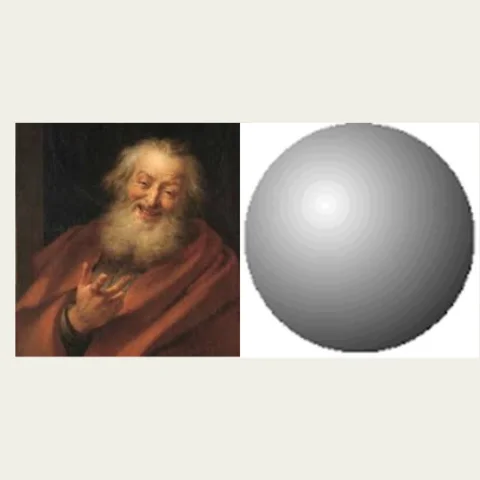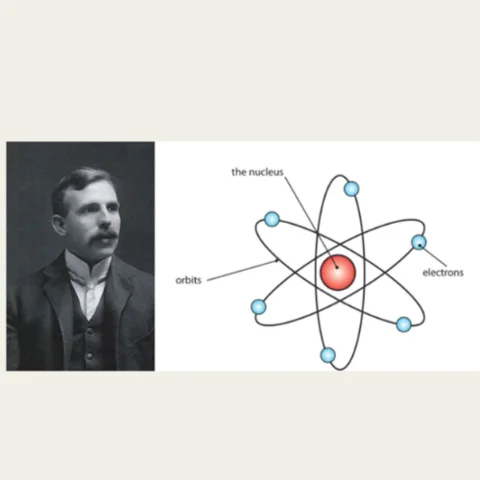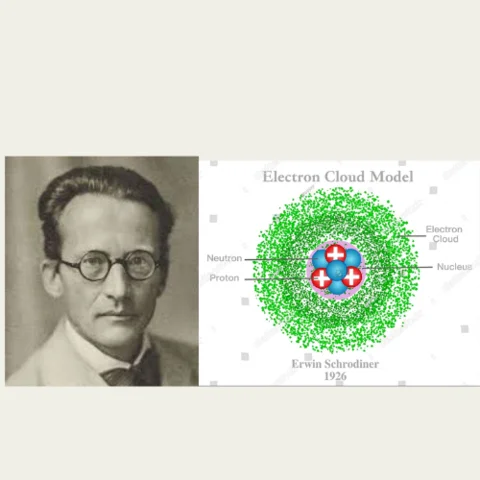-
 Contribution: Democritus was the first really to propose the idea of the atom. He believed that all mater is composed of invisible particles called "atomos". Model: The solid sphere is the first concept of indivisible particles. Experiment: None
Contribution: Democritus was the first really to propose the idea of the atom. He believed that all mater is composed of invisible particles called "atomos". Model: The solid sphere is the first concept of indivisible particles. Experiment: None -
 Contribution: Aristotle did not believe in the idea of atoms. He believed that matter was continuous and composed of 5 basic elements: earth, water, air, fire, and ether (which is up in the heavens). Model: No atomic model Experiment: No experiment
Contribution: Aristotle did not believe in the idea of atoms. He believed that matter was continuous and composed of 5 basic elements: earth, water, air, fire, and ether (which is up in the heavens). Model: No atomic model Experiment: No experiment -
 Contribution: Dalton made the atomic theory with his own version, which consisted of the idea that atoms of different sizes and masses can combine in fixed proportions to form compounds. Model: Solid Sphere Model Atoms are indivisible. Experiment: Dalton's law of multiple proportions and law of definite proportions.
Contribution: Dalton made the atomic theory with his own version, which consisted of the idea that atoms of different sizes and masses can combine in fixed proportions to form compounds. Model: Solid Sphere Model Atoms are indivisible. Experiment: Dalton's law of multiple proportions and law of definite proportions. -
 Contribution: Thomas discovered the electron using the cathode ray tube experiment. This showed that atoms contain smaller particles and are divisible. Model: Plum pudding model Experiment: Cathode ray tube experiment
Contribution: Thomas discovered the electron using the cathode ray tube experiment. This showed that atoms contain smaller particles and are divisible. Model: Plum pudding model Experiment: Cathode ray tube experiment -
 Contribution: Einstein showed that atoms and molecules are real by explaining how tiny particles move in liquids (Brownian motion). Model: Statistical Model of Atoms Experiment: Einstein’s work on Brownian motion provided predictions that were later confirmed.
Contribution: Einstein showed that atoms and molecules are real by explaining how tiny particles move in liquids (Brownian motion). Model: Statistical Model of Atoms Experiment: Einstein’s work on Brownian motion provided predictions that were later confirmed. -
 Contribution: Rutherford's gold foil experiment led himto the discovery of the atomic nucleus. He found that most of the atom is empty space, with small, dense nucleus at the center. Model: Nuclear model Experiment: Gold foil experiment
Contribution: Rutherford's gold foil experiment led himto the discovery of the atomic nucleus. He found that most of the atom is empty space, with small, dense nucleus at the center. Model: Nuclear model Experiment: Gold foil experiment -
 Contribution: Bohr presented a theory for the hydrogen atom, based on quantum theory that certain physical features only take discrete values. Only in designated orbits do electrons move around a nucleus; if they stray from this, the difference is released as radiation. Model: Planetary Model Experiment: Work on atomic spectra
Contribution: Bohr presented a theory for the hydrogen atom, based on quantum theory that certain physical features only take discrete values. Only in designated orbits do electrons move around a nucleus; if they stray from this, the difference is released as radiation. Model: Planetary Model Experiment: Work on atomic spectra -
 Contribution: Heisenberg introduced the uncerteainty principle which states that we cannot simultaneously know the exact postion and momentum of an electron. Which challenged Bohr's idea of fixed orbits. Model: Quantum Model Experiment: Thought experiment in quantum mechanics.
Contribution: Heisenberg introduced the uncerteainty principle which states that we cannot simultaneously know the exact postion and momentum of an electron. Which challenged Bohr's idea of fixed orbits. Model: Quantum Model Experiment: Thought experiment in quantum mechanics. -
 Contribution: Schrodinger developed the wave equation, which describes the probability of finding an electron in a given location. This led to the quantum mechanical model of the atom. Model: Quantum model Experiment: Schrodinger's wave equation
Contribution: Schrodinger developed the wave equation, which describes the probability of finding an electron in a given location. This led to the quantum mechanical model of the atom. Model: Quantum model Experiment: Schrodinger's wave equation -
 Contrbution: Further advancements in technology, such as the invention of electron microscopes and particle accelerators, have helped scientists to explore atomic structure in greater detail.
Contrbution: Further advancements in technology, such as the invention of electron microscopes and particle accelerators, have helped scientists to explore atomic structure in greater detail.
